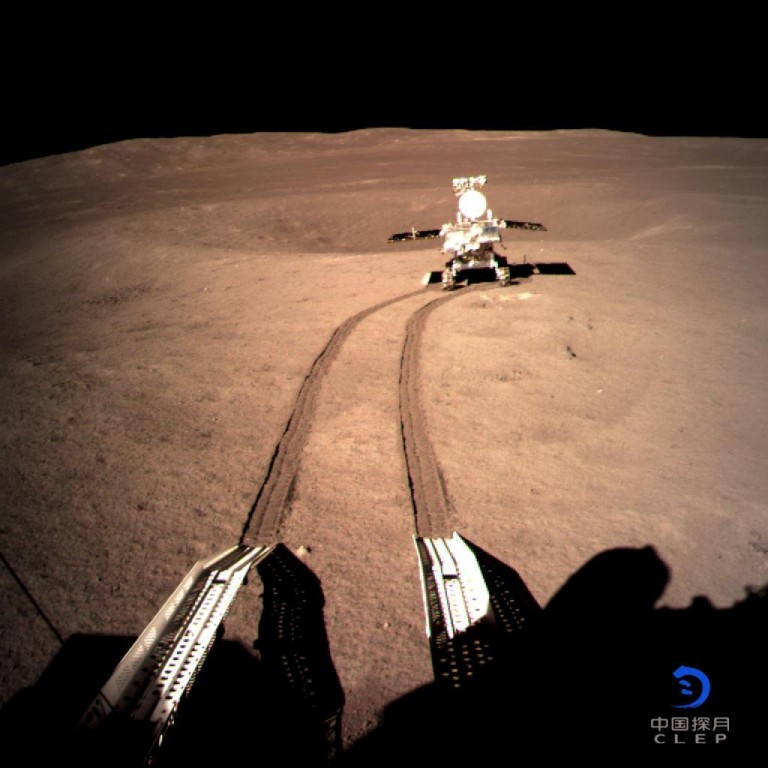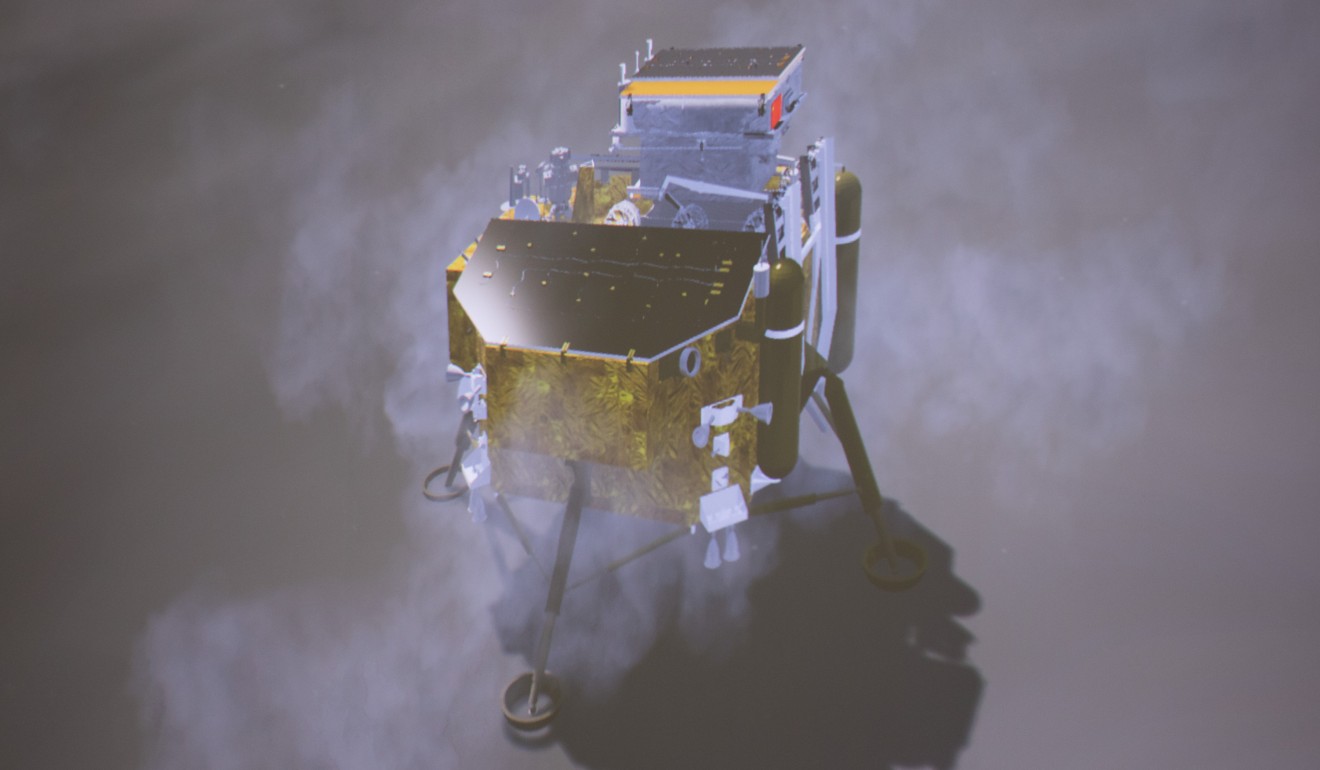
Listening to the Big Bang: China’s lunar lander tunes in to ancient radio signals from across universe
- Chang’e 4 uses its unique position on the ‘quiet’ side of the moon to seek out energy emissions that originated at the time the universe was born
Chang’e 4, China’s lunar lander, began tuning in to the oldest and faintest voices from across the universe using the antennas it carried to the “quiet” far side of the moon.
The three five-metre long antennas have opened a new chapter in radio astronomy by picking up low-frequency waves that devices on Earth cannot, as such signals blocked by the planet’s atmosphere.
The lander could help reveal what the universe was like right after the Big Bang, which scientists believe took place about 14 billion years ago.
Back then, low-frequency radio waves were generated as the first stars and galaxies were formed, astronomers said.
“The far side of the moon is very quiet as there are no noises from artificial satellites,” Zou Yongliao, deputy director of China’s National Space Science Centre, told Science and Technology Daily, the official newspaper of the Ministry of Science and Technology.
“Detecting low-frequency radio waves [from] there is a dream of astronomers across the world. It will fill the gap of low-frequency radio observation.”
Another set of those antennas – a kind jointly developed by China and the Netherlands – is carried on the relay satellite Queqiao, which stands between with the Earth and moon.

Astronomers say the far side of the moon is an ideal place to pick up low-frequency radio waves. The United States, Japan and the European Space Agency all made proposals to put a detector there, but China got there first.
“The far side of the moon is the best place in the inner solar system to monitor low-frequency radio waves – the only way to detect certain faint ‘fingerprints’ that the Big Bang left on the cosmos,” Joseph Silk, professor of astronomy at Johns Hopkins University in the US, said in the scientific journal Nature earlier last year, when the US, Europe and China all detailed their plans for missions to the moon.
Radio telescopes on Earth encounter too much interference from electromagnetic pollution caused by artificial signals, such as maritime communications and short wave (high-frequency) broadcasts, to get a clear signal from outside the atmosphere. The Earth’s ionosphere also blocks the longest wavelengths – which have the shortest frequencies – from reaching these devices in the first place.
China and the Netherlands decided to work together to develop the antennas for low-frequency celestial waves in 2015, with the latter focusing on those of Queqiao and China on Chang’e 4.
The cooperation between the two nations began a year after a trade mission when Chinese President Xi Jinping and Dutch King Willem-Alexander met in Amsterdam.

Both sets of antennas were designed to work for years. Powered by solar panels, they could be operating long after the three-year Chang’e 4 mission ends, Ping Jinsong, chief scientist of the radio wave project and a researcher with China’s National Astronomical Observatories, said.
These antennas were also designed to capture a part of the spectrum of the sun’s light that had not been observed before, providing information in predicting solar storms that might threaten the earth, Ping said.
Noise generated by the spacecraft is a major challenge for the antennas attached to Chang’e 4 and its relay. China and the Netherlands came up with different solutions to this problem.
China installed a fourth, shorter antenna on the moon lander. Ping said it would pick up waves from the spacecraft and “subtract” them from the data sent back to Earth.
The Dutch device – developed by the Netherlands Institute for Radio Astronomy and Radboud University – is designed to emit less noise than similar satellites, allowing it to pick up a broader range of radio waves.
“Every discovery made by these radio wave receivers on Chang’e 4 could complement what we know about the very early universe,” Ping said.
Last week, Chang’e 4 sent its lunar rover, Yutu 2, to begin mapping the moon’s inner structures and analysing soil and rock samples.

